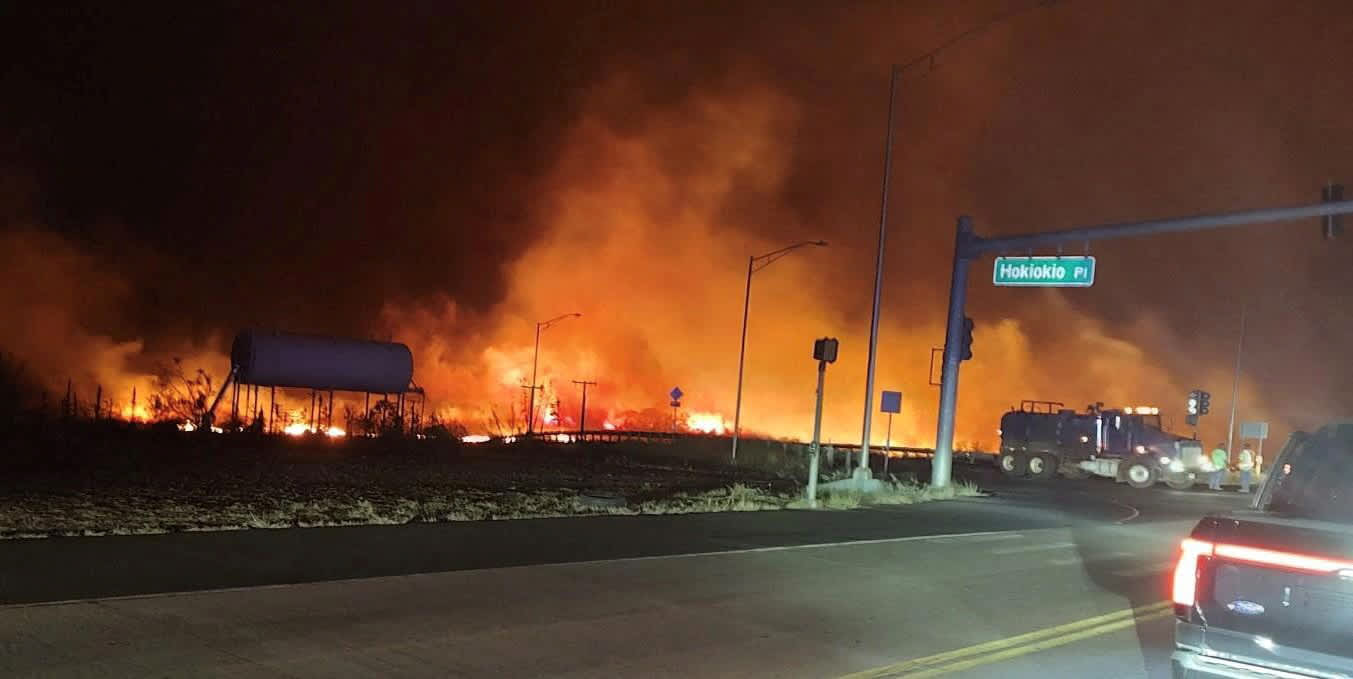Firefighters are increasing containment lines Friday around a deadly wildfire that spread with alarming speed and quickly overwhelmed historic Lahaina Town on the west end of Hawaii's Maui island.
The fires flared up Tuesday when weather conditions and other key factors, including the island's natural landscape and weeks of dry conditions, resulted in a nightmare scenario for the island and firefighters trying to protect lives and property. Strong winds influenced by Hurricane Dora to the south, low humidity and vegetation that has dried out over the summer months left Maui and its residents in peril.
At least 55 people have died since the fire began.
Get Southern California news, weather forecasts and entertainment stories to your inbox. Sign up for NBC LA newsletters.
The fire is the deadliest in the United States since the 2018 Camp Fire left at least 85 people dead in the Northern California community of Paradise. The Maui fires are Hawaii's deadliest natural disaster since a tsunami left 61 people dead on the Big Island in 1960.
The death toll will likely increase.
"What we saw is the largest natural disaster in Hawaii's history," said Hawaii Gov. Josh Green.
Details about a cause of the fire are not yet available, but here are some of the key reasons why the Maui wildfires spread with such devastating speed.
Hurricane Dora
Hurricane Dora was passing well to the south of the Hawaiian islands Tuesday when the wildfires started. The hurricane and an area of high pressure to the north played key roles in what happened next.
"These are the ingredients that came together," said NBC4 forecaster Belen De Leon. "You had a major hurricane passing to the south and a large area of low pressure to the north of the Hawaiian islands. The winds around this area of high pressured moved clockwise, and they worked in combination with the counter-clockwise winds from the hurricane. So this accelerated and strengthened the trade winds over Maui."
Trade winds are part of Hawaii's climate. Air moves from the high-pressure system to the north of the islands to the low-pressure area at the equator. Even though it was about 500 miles away, Dora upset the balance, influencing the low-pressure system and increasing the difference in air pressure resulting in unusually strong trade winds.
“Hurricane Dora is very far away from Hawaii, but you still have this fire occurrence here. So this is something we didn’t expect to see,” Hawaii's state climatologist, Pao-Shin Chu, told the Associated Press.
Wind speeds reached 60 to 80 mph Tuesday in the Lahaina area on Maui's west end. Wind-fanned flames quickly overran parts of the town, forcing some residents into the ocean in a desperate race to safety.
"The winds that hit us on that side of the island, some gusts were up to 80 mph, so everything happened so quickly," said Maui County Mayor Richard Bissen. "The fires came up so quickly, and they spread so fast."
Photos: Deadly Wildfires Devastate Maui's West End
Natural Landscape
Weather conditions on one side of Maui can be dramatically different from those on the other side due to its mountain chain.
On the windward side of Maui, moisture-rich air rises in elevation from the mountain chain and condenses, resulting in precipitation.
"That's the reason the windward side is just so green and lush," said De Leon. "But you have the opposite effect on the leeward side. that is where the winds compress as they drop in elevation and it also dries out the conditions on the leeward side, like Lahaina."
The latest U.S. Drought Monitor report illustrates the difference. The leeward side of the island is facing drier conditions than the windward side, with severe drought in the Kiehei area and moderate drought in and around Lahaina.
Click map below for larger version.

Flash Drought
Drought conditions changed dramatically on Maui since May, when no part of the island was considered unusually dry, according to the U.S. Drought Monitor.
But by mid-June, two-thirds of the island were abnormally dry or in moderate drought. By the second week of August, 83 percent of the island was either abnormally dry or in moderate or severe drought, according to the U.S. drought monitor.
An alarming increase in drought severity in a short period of time is considered a flash drought. Rains that usually drench the islands and contribute to their lush vegetation stopped at the same time temperatures increased, becoming so hot that moisture was stripped from plants, making them dry and more likely to ignite.
"The most destructive fires usually occur during drought. If an area falls into drought quickly, that means there is a longer window of time for fires to occur," Jason Otkin, an atmospheric scientist at the University of Wisconsin, Madison, told the Associated Press. "The risk for destructive fires could increase in the future if flash droughts become more common, as some studies have indicated."
What is the weekend forecast for Maui?
Dora and the area of high pressure will continue moving east, causing winds to subside.
Aided by improving weather conditions, fire crews reported 80-percent containment of the fire in the Lahaina area, one of at least three still burning Friday morning on Maui.
"In Lahaina, firefighting crews further secured the perimeter of wildland areas that burned," the county said in a statement. "That effort is continuing today, along with patrolling areas where structures burned. Civil Air Patrol flyovers Wednesday of the Lahaina town area showed that more than 270 structures were impacted by the fire."
In the Kihei area, the Pulehu Fire was 70 percent contained. Crews used heavy equipment to construct fire breaks through the night. No containment figures were available for the Upcountry area fire, where firefighters are focusing efforts in the Olinda and Upper Kula areas.



